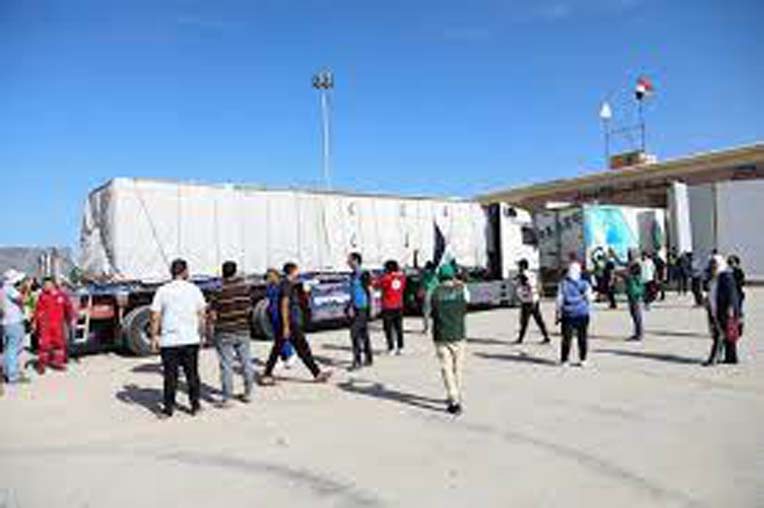In the heart of Tel Aviv, Israel, a strategic decision has been made by Israel’s War Cabinet to reroute humanitarian aid destined for Gaza, avoiding the clutches of Hamas. Rather than utilizing the conventional Kerem Shalom crossing or Egypt’s Rafah crossing in the southern regions of Gaza, an alternative path has been chosen. The revived crossing on the northeastern side of the Strip, in proximity to Rafah, where Hamas purportedly maintains four battalions, is the designated route.
The rationale behind this shift lies in the persistent hijacking of aid-laden trucks by Hamas, jeopardizing the delivery of essential supplies such as food, water, medicine, and fuel. The upcoming deliveries to Gaza areas under Israeli jurisdiction will navigate through the resurrected Karni crossing, situated near Kibbutz Nahal Oz.
Karni, once a bustling cargo terminal inaugurated in 1994 post the Oslo Accords, saw closure in 2011 due to escalating security concerns. The trend then favored the more expansive and modern Kerem Shalom crossing, leading to the eventual demolition of Karni’s structures in 2022.
The endeavor to deliver humanitarian aid to Gaza faces dissent within Israeli borders. Demonstrators, echoing the chant “Don’t feed Hamas,” have persistently sought to disrupt aid convoys at the Kerem Shalom crossing and other inspection points. Prime Minister Netanyahu staunchly defends these aid transfers, asserting their necessity to sustain the ongoing battle for hostages’ liberation and the expulsion of Hamas from Gaza’s reins.
A tragic backdrop unfolds, with Hamas’s October 7 assaults near the Gaza border claiming the lives of at least 1,200 individuals. Additionally, 240 Israelis and foreigners fell captive. In a recent update, Israel officially declared the demise of 31 among the remaining 134 hostages, intensifying the gravity of the situation.









